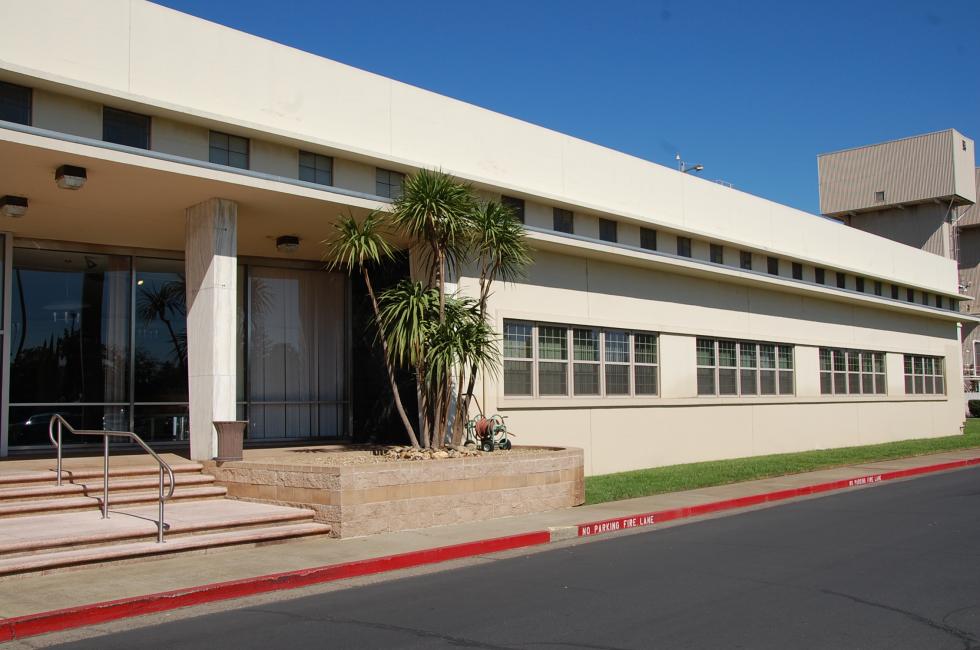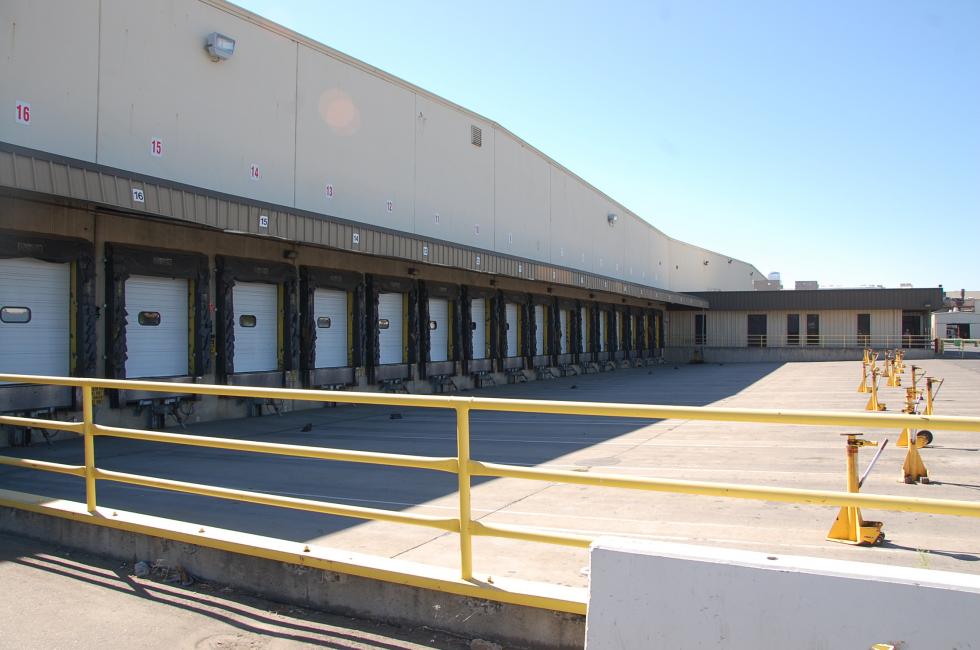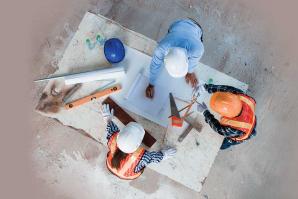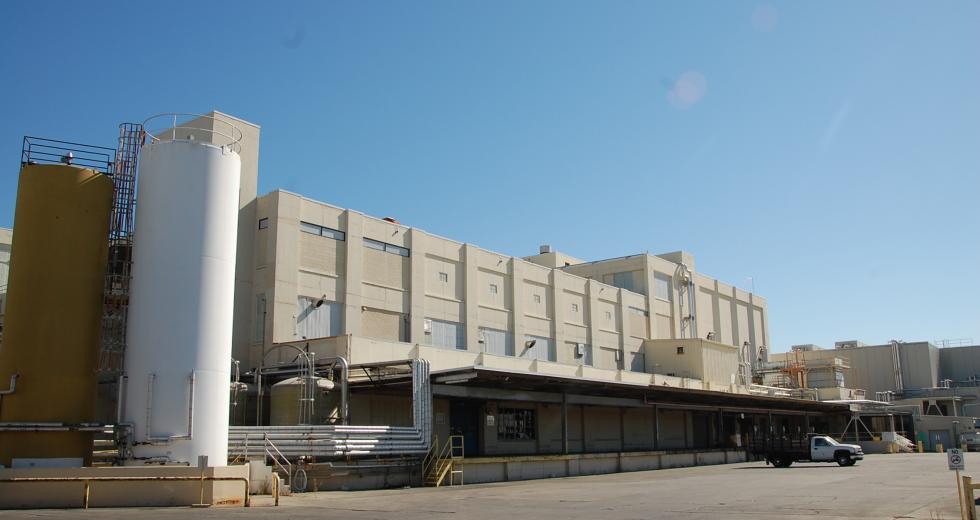When the Campbell Soup manufacturing plant in south Sacramento closed in July 2013, it brought an end not only to its own 66-year run but to more than a century of canning history in Sacramento. Completed in 1947, the plant was the last major cannery built in the city, which fed the world shelf-stable vegetables, fruit and salmon from the 1860s until the late 20th century. The closure eliminated about 700 positions and left a vacuum in the region’s industrial job market.
In December 2013, an affiliate of Hackman Capital Partners purchased the site in partnership with the Mill Valley-based industrial asset recovery company Rabin Worldwide. Rabin christened the site Capital Commerce Center, sold Campbell’s remaining equipment, and leased the usable real estate to tenants including Comcast, Silgan, Macy’s and Siemens. But a conspicuous relic remained: the four-story manufacturing building, the core of which dates back to 1947.
Once state-of-the-art, the hydraulic plant is now “functionally obsolete,” according to Nate Ellis, senior vice president of real estate at Rabin Worldwide, and would cost $30 million to demolish and prepare for redevelopment. But it came with an unusual perk: 165 million gallons of sewage allowance, set aside to handle Campbell’s water-based manufacturing processes. Together with the Sacramento Regional Sanitation District and County Supervisors Phil Serna and Patrick Kennedy, Ellis developed a Transferrable Sewer Credit Program to sell extra sewage allowance and finance the redevelopment. Comstock’s spoke to Ellis about this program and what the redevelopment will bring to the Capital Region.
Nate Ellis is the senior vice president of real estate at Rabin
Worldwide.

Can you give me some background on this project and how you got involved?
Campbell’s basically took their important papers and went home. We were left with everything from keys to filling machines. We ran a process where we cleaned up and sold it all. It took about a year to do all of that, and I was working on the real estate to get it leased up. There’s roughly 1.6 million (square feet) and some change real estate here. We went through a process that was pretty lengthy trying to fill up and reuse as much as we possibly could. … Right around 650-700,000 square feet has really come out of the wash as usable space, where it’s still functional and relevant in today’s market.
The part of the project that we’ve had a hard time leasing is the multi-story manufacturing area. It’s probably the place that most people see when they drive along and they think of the Campbell Soup facility. It’s a big, big building that’s been here since 1947. What we’ve learned over these last six or seven years is this space is really functionally obsolete. And this is a valuable piece of real estate in the Sacramento market because of its relative positioning in the world. We’re very close to downtown, we’re some of the only infill property that’s close to downtown; we’re right off of 99, we’re reasonably close to 5 and to 50. So it makes it a great location for doing some sort of infill, industrial type development. After quite a bit of work, we created a self-funding redevelopment program, and this is actually one of the keys that’s allowed us to be able to afford to do this redevelopment.
You’re talking about the Transferrable Sewer Credit Program? Tell me how that works.
Through the efforts of myself, Patrick Kennedy, Phil Serna, who are both county supervisors, and Regional San, we were able to come up with a way to sell some of the sewer credits that are at this site. … This property had the right to discharge 165 million gallons a month of sewer, which is unbelievably large. I’ve looked at several manufacturing people coming here and worked with several people, and no one even comes close to needing that much sewer usage. Over time, processes for cleaning and manufacturing stuff have just become more efficient.
Originally this plant was actually run as a hydraulic plant, and what that means is they used to pump water to the top floor, and everything moved through the plant in water. So they would cut the carrots, just as an example; the parts of the carrot that were going to be thrown away would go into one chute full of water that was just running like a stream, and that would go out of the plant into … the sewer. And then there’ll be a trough where you drop the cut sliced carrot that would go into the soup. And they would actually move product through the building using water, which led to a massive amount of water being sent down the sewer. …
So I worked with Regional Sacramento Regional Sanitation District, Patrick Kennedy and Phil Serna, who were both on the Regional San board at the time, and we created a program where the partnership was going to be able to sell some of the excess sewer credits to other developers, as long as we invested the money at the site. … We’re selling them at a discount to other developers. And it’s actually making it so other developers who were on the fence about being able to invest in Sacramento now can afford to do it.
The Campbell Soup manufacturing campus was renamed Capital
Commerce Center after being purchased by Rabin Worldwide.

By way of an example, a 200- or 300-unit apartment complex could have a $3 million to $5 million sewer impact fee cost for building their building, so if you can save them 20 percent or 15 percent of that, that’s not insignificant. And believe it or not, for developers, sometimes that’s enough to swing a project from not being worthwhile to being worthwhile. …
In Sacramento, there is a unique situation where Regional San services about 15 or so municipalities through these massive pipes called interceptors. And most people don’t know that this stuff exists. The sewer — you just expect it to work and if it doesn’t, you go crazy, right? … The reason why it’s called the Sacramento Regional Sanitation District is they put in these massive interceptor pipes that go all across the region, from Natomas to West Sac to Folsom to up to the edge of Roseville to Elk Grove. They’re massive pipes that collect entire cities worth of sewage, and then all goes to one plant in Elk Grove to be processed. And because of the unique nature of that, you’re able to sell the sewer credits all over the region. …
It’s unique to Sacramento, as far as I know, that (Transferable Sewer Credit) program. That forward thinking only has occurred here in Sacramento, and I’ve actually tried to use it as a model in other municipalities where I do business, because it really does work for redevelopment.
What impact has the pandemic and its destabilizing effects on the economy had on this project?
So the industrial marketplace is, besides residential, one of the only properly operating commercial markets in existence right now. Who’s going to the office? Some people are, most people aren’t. When you look at retail, the pandemic accelerated online shopping and killed an awful lot of retail that will probably just never come back. Well, how do you get those products to people who buy them online? You have to have industrial (real estate). And that’s why the need and desire for industrial product is incredibly robust right now. …
In Sacramento, there has been single-digit vacancy in industrial for probably the last four years. You’ve seen rents in the Sacramento market double in the last four years in the industrial marketplace. … I will tell you, most people who are involved in commercial and industrial real estate would not tell you that there’s been a slowdown, they tell you there’s been an acceleration, kind of like what’s happened in housing. As people turn more and more to contactless (shopping), the only way you can do that is if you have places to store, transition and move these products.
What will all of this redevelopment lead to for the region, especially south Sacramento?
What it’s going to lead to is a true redevelopment in a community in Sacramento that was very hard hit by Campbell Soup leaving. We will end up spending somewhere between $175 and $200 million to build about 1.4 million square feet of buildings. There will be hundreds of jobs from all of that construction, and then whatever long-term jobs get created, from whatever businesses come here. …
Tenants including Comcast, Silgan, Macy’s and Siemens currently
lease real estate at Capital Commerce Center.

I think I think we’ll hit at least the number that was here previously at Campbell Soup, which would be fantastic. When Campbell Soup closed down, they had 700 or 800 full time employees working here. … Macy’s has about 300 employees, Silgan has about 100, Comcast has about 125. So with just those three companies here as tenants, we’re at 525 people. So you can see it’s not going to take much to get a few more businesses in here, and we’ll be back to what was here when Campbell’s was operating. …
Sacramento and Stockton are in good locations for doing distribution back into the Bay Area and within the region. Stockton is going to beat Sacramento in some ways, because it’s been positioned and done a few things to make itself a little stronger in the marketplace for commercial users. But in Sacramento, all you have to do is drive by Metro Air Park and look at the 2 or 3 million-plus square foot buildings that have been built there, and you can see that’s all happening here too. …
I think there’s a lot of people on my team that think Sacramento is worthwhile. It’s still growing, and it’s worth investing in, worth being here, worth having a foothold in the marketplace.
Edited for length and clarity.
—
Stay up to date on business in the Capital Region: Subscribe to the Comstock’s newsletter today.
Recommended For You

The Burbs Are Booming in the Capital Region
Cities such as Roseville, Folsom, Rancho Cordova and Elk Grove have become self-contained places where people barely have to leave city limits for housing, work, shopping and entertainment.

The Granny Flat Has a New Name
Architects are teaming with local jurisdictions to include accessory dwelling units and tiny houses in the affordable housing conversation.

How to Build Out of a Pandemic
The commercial construction industry quickly adapted during the pandemic and continues to adjust its practices.

A New Era for Roseville’s Placer County Fairgrounds
Comstock’s spoke to Charlie Gardner, general manager of @the Grounds in Roseville, about new facilities on the renovated fairgrounds, including the $34 million Roebbelen Center.



